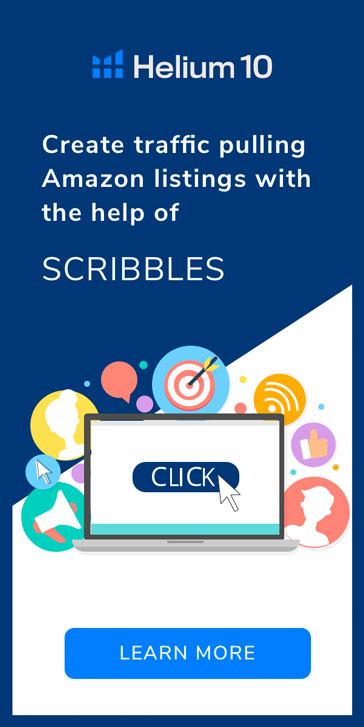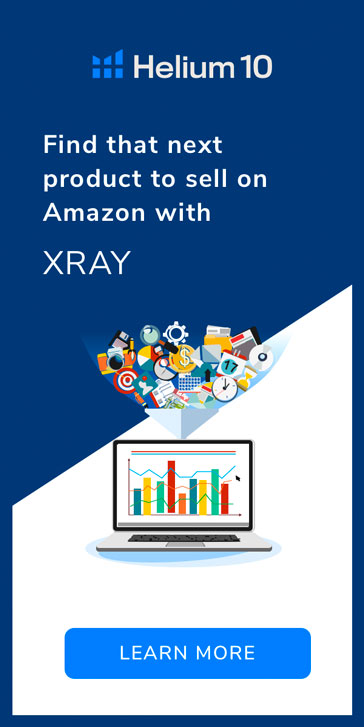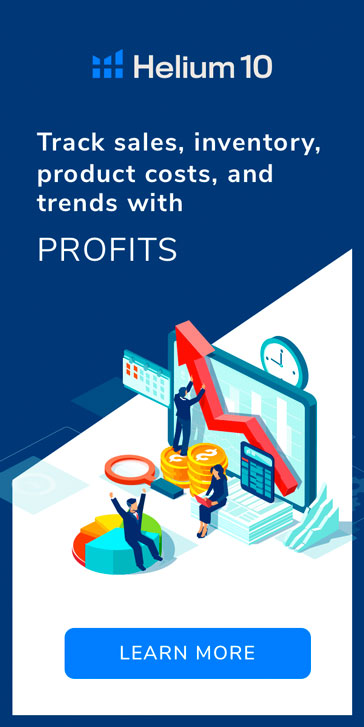Will Trump’s Tariffs Kill Drop-shipping?
The US Trade War With China And ePacket Tracking On Amazon
If you are an e-commerce business owner in 2019, ePacket tracking on Amazon might not be on your existing radar screen.
Still, to be successful on Amazon and in business, you really need to have your head on an economic swivel in order to stay up to date with the often fluid competitive landscape. One ever-changing aspect of a business is without a doubt the volatile arena of shipping options.
With the increasing number of businesses from all over the world establishing a significant online presence, the tracking numbers corresponding to the products that these customers are waiting for, are more often than not generated by companies on the other side of the globe.
It’s no surprise that a significant number of those purchases come from China. The proliferation of ePacket shipping has been a driving force behind a major change in the way we receive goods from China.
The Universal Postal Union (UPU) Treaty
Leveling the playing field in the 19th century
An early branch of what will become the United Nations established in 1874, the Universal Postal Union (UPU) Treaty, a reciprocal agreement between 192 member countries to facilitate international postal delivery.
This treaty’s main goal was to try to establish an economically feasible model that would allow developing countries with considerably diminished economies to send international mail.
Under the terms of the agreement, countries were effectively charged a rate that corresponds with their relative wealth. At the current time, the treaty makes it possible to ship small packages directly from China to the United States at extremely low rates – a practice often used by dropshippers. Often, these rates are lower than what most Americans pay to ship packages domestically.
In 2010, ePacket delivery was introduced and included under the same treaty between the United States Postal Service (USPS) and China’s state mail carrier. To qualify for ePacket delivery, an item must weigh no more than 4.4 lbs. ePacket included the addition of tracking and delivery confirmation as well as expedited shipping. This deal was viewed as a huge win for Chinese businesses at the expense of millions of dollars in losses for the USPS.
Let’s put this into perspective: Using ePacket delivery, you could ship a 4.4 lb. package from China to the United States for roughly $5. However, to ship that same package within the US (ex. from Los Angeles to New York), it would cost $15-$20 or 3x-4x the cost of shipping from China to the US.
Okay. Why should an ePacket tracking number be so important to me?
First of all, what is an ePacket, and why has it replaced standard shipping as the go-to shipping option in receiving a product from China?
Let’s begin with the inescapable fact that we buy goods from China because of the low cost of living and casual labor regulations that allow manufacturers to make products cheaply there.
But there’s a second, very important reason:
It’s extremely inexpensive to send goods from China to the United States. Sellers in China can charge a pittance to ship an already-cheap item across an ocean.
These products, purchased from China were originally shipped by sea. Delivery could sometimes take several months. In 2011, when e-commerce really started growing exponentially in the United States, the U.S. Postal Service entered into a bilateral agreement with China that served to dramatically increase the ease and quantity of international e-commerce sales for China and changed forever the way we acquire goods.
This new shipping service and agreement began as a partnership between the United States Postal Service with Hong Kong Post and eBay China allowing packages from China and Hong Kong to receive not only USPS First Class Mail Service but a delivery confirmation as well.
ePacket, and e-commerce; it’s easy to see an important and valuable link between the two. Pure and simple, this shipping service was designed to both fuel and support a 21st century digital economy.
The low cost of manufacturing in China combined with the artificially low shipping charges helped precipitate an avalanche of goods flowing from the east. The volume of ePackets more than doubled from 2014 to 2016, and according to the Postal Service, the revenue for the USPS reached $493 million, a historically high total.
What are the benefits of ePackets to Amazon sellers?
ePacket delivery began as a quick and affordable shipping solution for Chinese businesses to ship to the United States. Over time, ePacket has expanded into 35 other countries such as Canada and Australia. The list of countries that have access to ePacket is constantly growing.
Here is a list of the primary benefits of ePacket shipping:
It’s just faster:
Standard shipping from China can easily take months for delivery. ePacket delivery shortens the delivery times dramatically, sometimes a package is received in as little as 10 days
Significantly lower cost:
An ePacket shipping option simply offers dramatically less expensive package delivery that allows both buyers and sellers to be increasingly aggressive with a hyper-competitive pricing structure.
Extensive ePacket tracking:
The ePacket delivery provides customers the ability to track the shipping of their product every minute of its journey. For any e-commerce business, this is an enormous benefit. ePacket tracking numbers can easily be tracked by using the USPS, ePacket China Post, or sites like 17track.net.
Now, back to the trade war between China and the US
A trade war is an escalation of hostilities, except instead of physical struggle, the warring nations wage a battle against each other’s goods and services. They do this by either adding a tax to the cost of an import or by imposing a quota. This means limiting the number of items that can be imported from a country in which trading is considered unfavorable. President Trump is in the case with China, as well as Mexico, imposing a tax on imports.
While it’s true that tariffs might make some domestic goods cheaper, and possibly provide a boost to the local economy, things are not so simple on the global economic playing field. To maintain a profit margin, companies routinely pass on the extra cost to consumers. Literally, everything that we purchase, from beer and whiskey to automobiles and tractors, will increase in price.
China has already targeted US agricultural and industrial products for tariffs and threatened to take additional increasingly significant economic measures following President Trump’s most recent proposed taxes.
The White House is doubling down
The White House appears to be doubling down on enforcing more tariffs in the growing US trade war with China. On the heels of the announcement that the United States would be imposing tariffs on $200 billion worth of goods being imported to the US from China, President Trump has now threatened to impose tariffs on an additional $300 billion of Chinese goods if Mr. Xi does not agree to the original deal. These penalties are going into effect in concert with his targeting of global steel and aluminum trade partners. Similarly, he is threatening foreign automakers with additional tariffs, both in Europe and Japan.
And doubling again . . .
In another bold move that is sure to shake up the community of dropshippers and Amazon sellers, President Trump has vowed to alter this equation, announcing on Wednesday that he is instructing the U.S. Postal Service to levy higher fees on packages from international destinations, including China.
The announcement while mildly controversial was not exactly unexpected. A significant number of people involved in e-commerce, from Amazon and U.S. small businesses to sellers on eBay, have been asking the United States for a long time to charge more for delivery on behalf of foreign postal carriers.
The higher levy fees could help U.S. small businesses better compete against Chinese merchants while also slowing the flow of counterfeit goods shipped cheaply from overseas. The anticipated changes won’t go into effect until late 2019. In the meantime, negotiations will continue.
This much remains true; as e-commerce becomes increasingly interconnected globally, the proposed changes to the international postage agreement have the potential to require a substantial recalibration in how we do business.
What This Means for Drop shippers
First of all, what is drop shipping?
Drop shipping is a retail model in which a store doesn’t actually keep the products it sells in stock. Instead, when a store sells a product, the item is purchased from a third party who in turn ships it directly to the customer. Ultimately, the business owner never actually handles the product.
With drop shipping, the majority of products are manufactured in China or Hong Kong. This is why popular drop shipping suppliers such as AliExpress, DHgate, TOMTOP, and LightInTheBox among many others, are all based in this part of the world.
The ePacket delivery option from China has allowed this model to flourish in recent years.
It often goes something like this:
- Set up a Shopify storefront
- Integrate the storefront with Oberlo and AliExpress
- Take orders from US-based consumers (usually only one item at a time)
- Chinese companies then ship each order to the US, creating the ultimate automated e-commerce machine.
The four primary benefits this economic machine has created are:
- Low capital investment and overhead
The biggest advantage to drop shipping is that without major up-front inventory investments in both inventory and warehouse fees, it’s possible to launch an ecommerce store. Traditionally, retailers have had to dedicate significant amounts of capital to acquire inventory before making a single sale. With the drop shipping model, there’s no need to purchase a product unless you have already made a sale and have been paid by the customer. Successful drop shipping businesses can easily be run from a coffee shop or home office.
- The ability to market test multiple products
Without having to pre-purchase the items you sell, there’s really no end to the number of products available to you. It’s possible to offer a virtually endless variety of products to your potential customers. If suppliers stock an item, you can list it for sale on your website.
- Easy to Scale
With a traditional business model, more business probably means more work. In taking advantage of drop shipping suppliers, much of the additional work to process additional orders will be upstream of you, and done by the suppliers. The time and energy that you save can in turn be put into growing your business.
- You can sell practically anything
The products that you sell are literally limited only by your imagination. It’s possible to sell almost anything.
And, as it seems, from anywhere,
. . . even the European Union and the United States. New companies like Spocket, might not have the millions of items like those on AliExpress, DHgate, TOMTOP, and LightInTheBox but they’ve made improvements by focusing on previously overlooked suppliers in the US and EU. This can offer advantages, among them, rapid shipping, a possibility of higher quality goods, and faster return processing. Importantly, Spocket also offers branded invoices, that draw attention to your own particular e-commerce business. The products shipped will have your store’s logo and name on them.
Hold on, not so fast . . .
While this model has benefited greatly from many efficiencies that would blow the minds of our parents and grandparents such as lower costs and automation, it’s coming to a screeching halt—and here’s why:
With the current administration cracking down on trade policies (particularly between the US and China) and the end of ePacket delivery looming on the horizon, it may be time for drop shippers to explore a better business model before they’re left “holding the bag.”
What is Better Than Drop shipping?
If you’re in the e-commerce or digital marketing arena, you may already be familiar with the ever-growing trend of selling private label products via Amazon FBA (Fulfillment by Amazon). There are many benefits to using Amazon as a sales platform compared to drop shipping using your own online storefront, but two main benefits stand above all others, traffic, and trust.
Traffic
If you currently operate your own e-commerce store, you know that getting traffic is the hardest part, even if you’re a wizard at paid or organic traffic. But here’s a little secret: Amazon has traffic – tons of it actually. In 2018, Amazon accounted for 49.1% of online retail sales in the US. So there’s plenty of traffic on Amazon to go around.
The only problem: an incomplete product catalog. That’s where you come in as a 3rd-party seller to fulfill the needs of customers looking to buy YOUR products.
Trust
And what about trust? Amazon has plenty of that too. In fact, their customers trust them so much that they keep their credit card(s) on file, so they can do cool things like buy with one click. That’s a far cry from all the convincing you have to do on your Shopify storefront to get a prospective customer (who’s never even heard of you) to convert and buy your “incredibly unique and high-quality yoga mat.”
In terms of conversion, it’s not uncommon to see a 30-40% conversion rate on a solid Amazon product listing. Normally that’s unheard of in e-commerce, even for the top 1% of marketers in the world. Bottom line: it would be very unwise to ignore Amazon as a sales channel.
If you want to learn more about Amazon FBA and it’s amazing opportunities, check out the Serious Sellers Podcast hosted by Helium 10’s Director of Training, Bradley Sutton, for free information about how to stay ahead of the ever-changing Amazon curve…
Don’t have a product to sell yet?
What This Means for Amazon Sellers?
While this new policy sounds foreboding, there is a silver lining. Since shipping small items from the US to China will undoubtedly become much more expensive, it will mean fewer counterfeit products and hijackers to steal your sales and tarnish the reputation you’ve worked so hard to build with your customers. It will soon become much too costly for others to ship counterfeits of your product from China to the US.
If you’re one of the thousands of sellers who’s wondered when Amazon will find a way to cut down on hijackers and counterfeit products, this new proposal could be your silver bullet, or at the very least cut down on the problem. If you’re looking to build up your “off-Amazon” presence, you’re also in a great place.
These new changes will allow you to be more competitive from a shipping cost standpoint against those who previously had an unfair advantage with ePacket delivery by shipping products from China to the US.
What’s Next?
Whether you’re an Amazon seller looking to continue growing your business or a drop shipper contemplating a new business model altogether, don’t ignore the massive opportunity that Amazon FBA presents. Play by the rules and continue building a business that brings value to your customers.
It’s these businesses that are sold for the highest multiples and could allow you to exit with a massive payday. And who doesn’t want a massive payday? You might hit speed bumps along the way, but in the end, you’ll win. It’s never been easier to start, scale, and sell an e-commerce business, and we have Amazon to thank for that. What do YOU think the new changes will mean for e-commerce businesses?
Share your thoughts in the comments!
DISCLAIMER
The goal of this article is not a political one, but rather how the current geopolitical landscape may affect Amazon sellers and US-based dropshippers. If you fall into one of those two groups, you may be surprised at how these new changes could affect your business. This is different from the larger tariffs instituted by the US on imports from China which have already added up to 10% to some sellers’ cost and could possibly grow to 25% on select items in 2019. We’ll touch on those in another blog.
Original post from How Will Trump Tariffs Affect Dropshippers & Amazon Sellers? – Helium 10





























